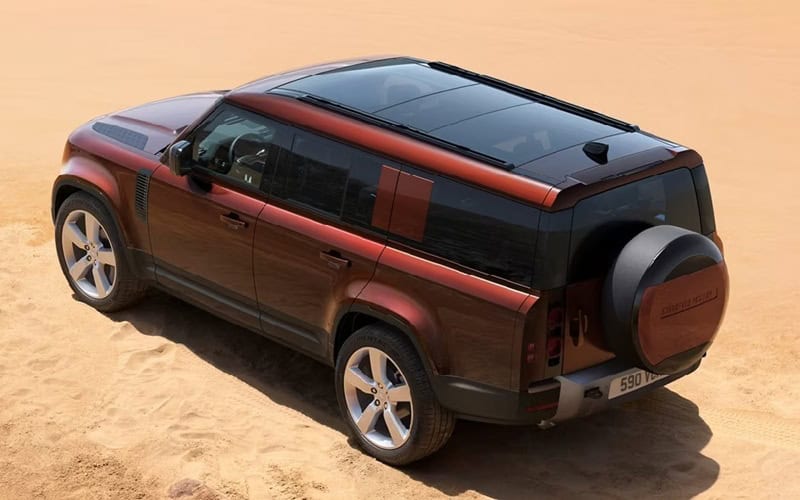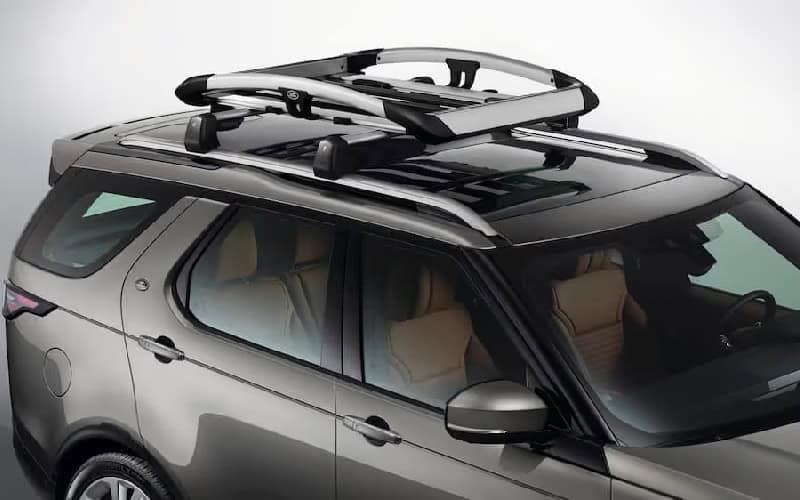The Range Rover Sport introduces an evolved suite of driving modes that transform this luxury SUV from a refined on-road performer to an unstoppable off-road machine. Let’s take a closer look at what makes the Range Rover Sport stand out with its sophisticated terrain management system and driving modes that adapt to virtually any condition.

The Evolution of Performance Versatility
The Range Rover Sport continues to define the midsize luxury SUV category, combining cutting-edge technology, versatile performance, and refined design. At the heart of this versatility lies its comprehensive driving mode system that allows drivers to harness the vehicle’s full potential across various terrains and driving conditions.
Whether navigating urban streets or exploring remote wilderness routes, the Explorer’s advanced driving modes ensure you make a statement with both capability and confidence. The latest model elevates this experience with more intuitive controls and refined performance characteristics in each mode.
Terrain Response 2: Intelligence Meets Capability
The cornerstone of the Range Rover Sport adaptability is the Terrain Response 2 system. With seven distinct terrain modes to choose from, this intelligent system automatically adapts the vehicle’s engine, gearbox, differentials, and chassis to optimize performance for specific conditions.
What truly sets the latest model apart is the enhanced Configurable Terrain Response feature, allowing drivers to personalize their off-road system preferences. This means you can fine-tune the vehicle’s reactions to match your driving style and the specific challenges of your journey.
The system monitors more than 100 parameters up to 500 times per second to determine precise responses required for optimal performance. This millisecond-level adaptation ensures the Range Rover Sport maintains its composed handling regardless of terrain complexity.
The Seven Terrain Modes Explained
Comfort Mode
For everyday driving, Comfort Mode prioritizes a smooth, refined ride. The vehicle’s air suspension is tuned for maximum passenger comfort, with gentle throttle response and seamless transmission shifts. Steering effort is easy, providing maneuverability in urban environments and highway cruising.
This mode also optimizes the Active Noise Cancellation system, which uses advanced audio technology to filter out unwanted noises. The result is a serene cabin environment that exemplifies the luxury expected from Range Rover.
Dynamic Mode
When you want spirited driving, Dynamic Mode transforms the Range Rover Sport into a performance-focused machine. Throttle response sharpens considerably, while the transmission holds gears longer to maximize power delivery. The air suspension lowers the vehicle by 15 mm for improved aerodynamics and reduced body roll.
The Dynamic Launch feature, exclusive to the Range Rover Sport, optimizes gear shift behaviour and delivers maximum torque for enhanced straight-line acceleration. Steering becomes more weighted and responsive, providing greater feedback to the driver.
Grass/Gravel/Snow Mode
When conditions become slippery, this mode adjusts traction settings to prevent wheel spin. Throttle response is deliberately dampened to avoid sudden power delivery that could break traction. The transmission starts in second gear, where possible to reduce wheel slip.
Additionally, the air suspension raises the vehicle by 25 mm to provide additional clearance. Brake application has more progressive stopping power on loose surfaces.
Mud and Ruts Mode
For challenging, muddy terrain, this mode optimizes the vehicle’s traction for maximum performance on deep, rutted surfaces. The differential locks engage more readily to ensure power is distributed to wheels with grip, while throttle response is calibrated for controlled progress through deep mud.
The suspension rises to its off-road height of 65 mm above standard, maximizing ground clearance to navigate deep ruts. The transmission’s shift patterns are optimized to maintain momentum through challenging sections.
Sand Mode
When traversing sandy terrain, this specialized mode adjusts the vehicle’s systems to prevent bogging down. Throttle sensitivity increases to help maintain momentum, while the transmission allows higher revs before shifting to prevent the wheels from digging in.
The traction control system becomes more permissive, allowing controlled wheel slip that helps the tires “float” over loose sand rather than digging down into it. The suspension also raises to provide additional clearance for undulating dunes.
Rock Crawl Mode
For extreme off-road challenges involving rocky terrain, Rock Crawl Mode delivers precise control at very low speeds. The throttle response becomes extremely gentle, allowing for minute adjustments when navigating obstacles.
The transmission locks into its lowest range, and the differentials are prepared to instantly lock when slip is detected. The suspension raises to its maximum height of 75 mm above standard, providing class-leading ground clearance. Hill Descent Control activates automatically to manage steep descents with perfect control.
Wade Mode
A standout feature of the Range Rover Sport is its Wade Mode, which prepares the vehicle for water crossings up to 900 mm deep. When activated, the air suspension raises to its maximum height, and the climate control system switches to recirculation mode.
Throttle response is carefully calibrated for smooth progress through water, while the transmission is locked in a low gear to maintain consistent speed. The vehicle’s sensors continuously monitor water depth, and the infotainment system displays this information to the driver.
Auto Mode: The Intelligence of Terrain Response 2
The premium feature of Terrain Response 2 is its Auto Mode, which constantly analyzes the terrain and automatically selects the optimal driving mode. Using a sophisticated network of sensors, the system detects the surface conditions and adjusts vehicle settings without driver intervention.
This hands-off approach ensures the Range Rover Sport is always in the ideal configuration for the terrain beneath its wheels. For drivers unfamiliar with off-road driving or those navigating constantly changing conditions, Auto Mode provides peace of mind and enhanced capability.
Dynamic Air Suspension: The Foundation of Adaptability
The Range Rover Sport features advanced Dynamic Air Suspension that works in concert with the driving modes. This system utilizes switchable-volume air springs that react instantly to changing conditions.
What makes this system particularly impressive is its predictive capability. The suspension uses navigation data to pre-empt the road ahead, preparing the vehicle for upcoming terrain changes before they’re encountered. This forward-thinking approach delivers more responsive, dynamic, and composed handling than ever before.
Adaptive Off-Road Cruise Control
A revolutionary feature in the latest model is the Adaptive Off-Road Cruise Control. This system enables drivers to maintain a steady speed in challenging conditions, such as mud, wet grass, snow, and dirt roads.
Unlike conventional cruise control, this system senses the terrain and automatically controls the vehicle’s speed for optimal traction while maintaining the driver’s desired comfort level. This reduces driver fatigue during long off-road excursions and ensures the vehicle maintains optimal progress through difficult sections.
5 Facts About Range Rover Sport Driving Modes
- The Terrain Response system processes over 50 million calculations per second across its various sensors and control modules to determine the optimal vehicle configuration.
- In Wade Mode, the Range Rover Sport can ford water depths that would completely submerge some compact cars, thanks to its 900 mm wading capability.
- The Dynamic Launch feature in Dynamic Mode can propel the Range Rover Sport from 0-100 km/h in just 3.6 seconds when using combined engine and mild hybrid electric vehicle output.
- The air suspension system can adjust the vehicle’s height by up to 135 mm, ranging from its lowest (dynamic) to its highest (off-road) setting.
- Terrain Response 2’s Auto Mode uses artificial intelligence algorithms that learned from over 1 million kilometers of real-world testing across five continents.
Questions and Answers
How does Terrain Response 2 differ from the original Terrain Response system?
Terrain Response 2 builds upon the original system by introducing an Auto mode that automatically detects the terrain type and adjusts the vehicle’s settings accordingly. This eliminates the need for manual mode selection and continuously optimizes performance as conditions change. The system also features more sophisticated sensors and faster processing capabilities for more responsive adaptation to changing conditions.
Can I customize the driving modes to my personal preferences?
Yes, the latest Range Rover Sport features Configurable Terrain Response, which allows drivers to personalize specific parameters within each driving mode. You can adjust throttle sensitivity, transmission shift points, suspension firmness, and steering weight to create a tailored driving experience that matches your preferences and the specific terrain challenges you frequently encounter.
Does using off-road modes affect fuel efficiency?
Different driving modes do impact fuel consumption based on their specific calibrations. Comfort Mode generally offers the best efficiency for on-road driving, while off-road modes prioritize capability over economy. However, by using the appropriate mode for each terrain type, you ensure the vehicle operates optimally in those conditions, which can actually improve efficiency compared to using an inappropriate mode. The system’s Auto mode effectively balances performance and efficiency based on current conditions.
How does the Wade Sensing system work?
The Wade Sensing system uses ultrasonic sensors located in the door mirrors to measure water depth in real-time. This information is displayed on the central touchscreen, showing the current depth relative to the vehicle’s maximum wading capability of 900 mm. The system also adjusts various vehicle parameters, including ride height, throttle response, and transmission settings, to optimize control during water crossings.
What happens if there’s a system malfunction while off-road?
The Range Rover Sport features multiple redundancy systems designed for off-road safety. If Terrain Response 2 detects a malfunction, it will alert the driver and default to a safe operating mode, typically Comfort. The vehicle maintains basic four-wheel drive capability even if advanced features are temporarily unavailable. For critical systems, the vehicle also features a backup mode that ensures you can safely exit challenging terrain even with reduced functionality.
*Disclaimer: Content contained in this post is for informational purposes only and may include features and options from US or international models. Please contact the dealership for more information or to confirm vehicle, feature availability.*


